Quote of the Day:
"Five out of four people have trouble with fractions."
-- Steven Wright
Objectives:
The student will integrate integrals by the method of
partial fractions.
The student will decompose fractions into two or more
fractions.
1. Collect homework.
2. Motivation for Partial Fractions:
The purpose of today's lesson is to decompose a fraction
into simpler rational expressions to which we can
apply the basic integration formulas.
This technique was introduced in 1702 by John Bernoulli
(a Swiss mathematician).
Suppose we wish to find the following integral:
 We could complete the square and use trig substitution
to solve this. But wouldn't it be nice to know that
We could complete the square and use trig substitution
to solve this. But wouldn't it be nice to know that
 Then we could just integrate each fraction since both
are of the form du/u.
Well, this is what Partial Fractions will do for us.
3. Recall how to add two fractions:
Then we could just integrate each fraction since both
are of the form du/u.
Well, this is what Partial Fractions will do for us.
3. Recall how to add two fractions:
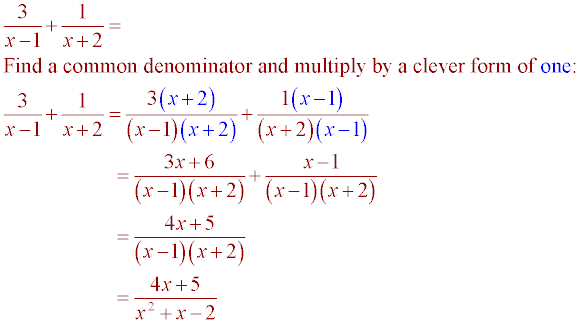 Now to reverse the process:
Now to reverse the process:
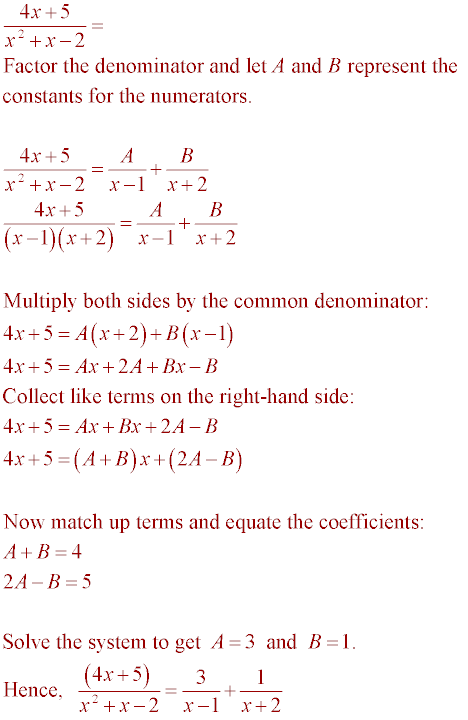
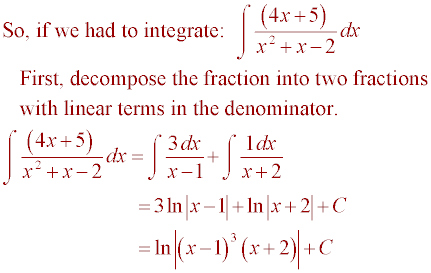 4. Example
4. Example
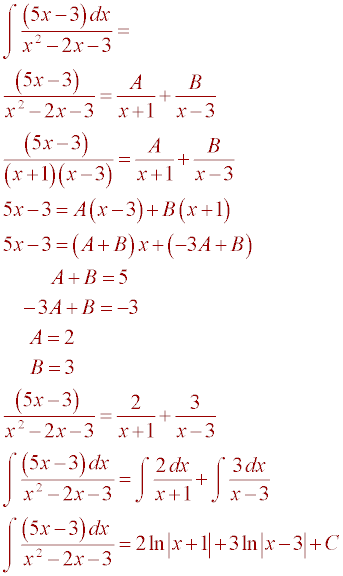 5. "Rules" for setting up the partial fractions
(1) If the denominator consists of unique linear
factors, then write as a sum of single letters
(representing constants) over each linear factor.
(2) If there is the same linear factor, than you must
set up a single letter over the factor, then a
single letter over the factor squared, etc. up
to the largest power of the factor.
(3) If there is a quadratic (or higher) factor,
you must allow for a linear term as well as a
constant term in the numerator (Ax + B).
In symbols:
5. "Rules" for setting up the partial fractions
(1) If the denominator consists of unique linear
factors, then write as a sum of single letters
(representing constants) over each linear factor.
(2) If there is the same linear factor, than you must
set up a single letter over the factor, then a
single letter over the factor squared, etc. up
to the largest power of the factor.
(3) If there is a quadratic (or higher) factor,
you must allow for a linear term as well as a
constant term in the numerator (Ax + B).
In symbols:
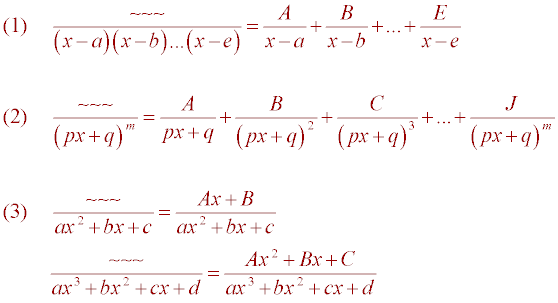 Students often question Rule #2 - why do you need
multiples of a factor which appears more than once?
Here are two reasons why they are needed:
Students often question Rule #2 - why do you need
multiples of a factor which appears more than once?
Here are two reasons why they are needed:
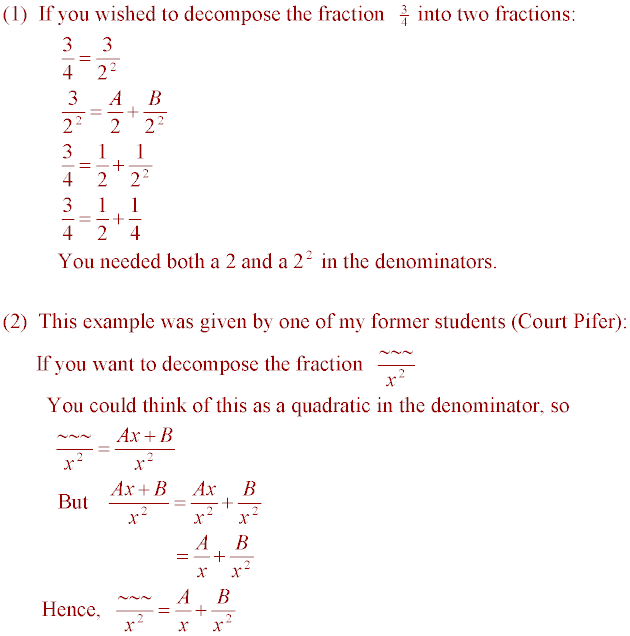 6. Examples
6. Examples
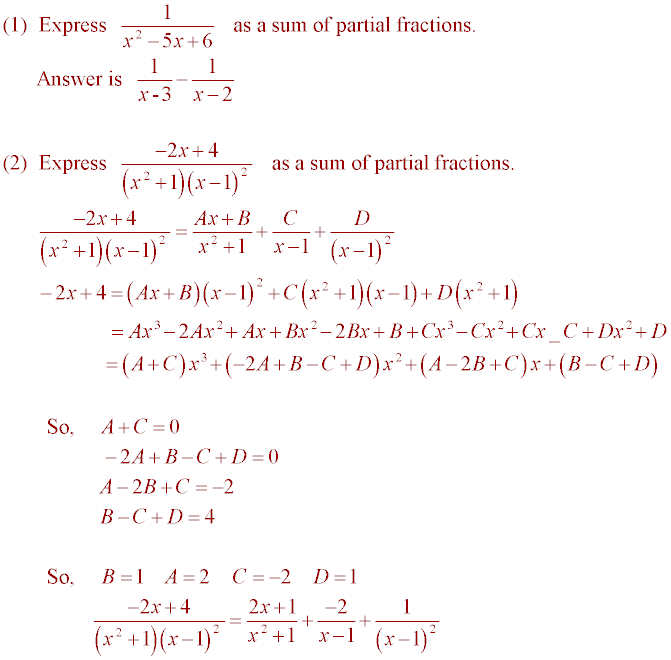 7. Assignment:
Read p. 537 - 543
p. 543 (1 - 8) -- Set up only
p. 543-544 (9, 10, 13, 25, 27, 28)
7. Assignment:
Read p. 537 - 543
p. 543 (1 - 8) -- Set up only
p. 543-544 (9, 10, 13, 25, 27, 28)
Click here to go to the next page
We could complete the square and use trig substitution to solve this. But wouldn't it be nice to know that
Then we could just integrate each fraction since both are of the form du/u. Well, this is what Partial Fractions will do for us. 3. Recall how to add two fractions:
Now to reverse the process:

4. Example
5. "Rules" for setting up the partial fractions (1) If the denominator consists of unique linear factors, then write as a sum of single letters (representing constants) over each linear factor. (2) If there is the same linear factor, than you must set up a single letter over the factor, then a single letter over the factor squared, etc. up to the largest power of the factor. (3) If there is a quadratic (or higher) factor, you must allow for a linear term as well as a constant term in the numerator (Ax + B). In symbols:
Students often question Rule #2 - why do you need multiples of a factor which appears more than once? Here are two reasons why they are needed:
6. Examples
7. Assignment: Read p. 537 - 543 p. 543 (1 - 8) -- Set up only p. 543-544 (9, 10, 13, 25, 27, 28)